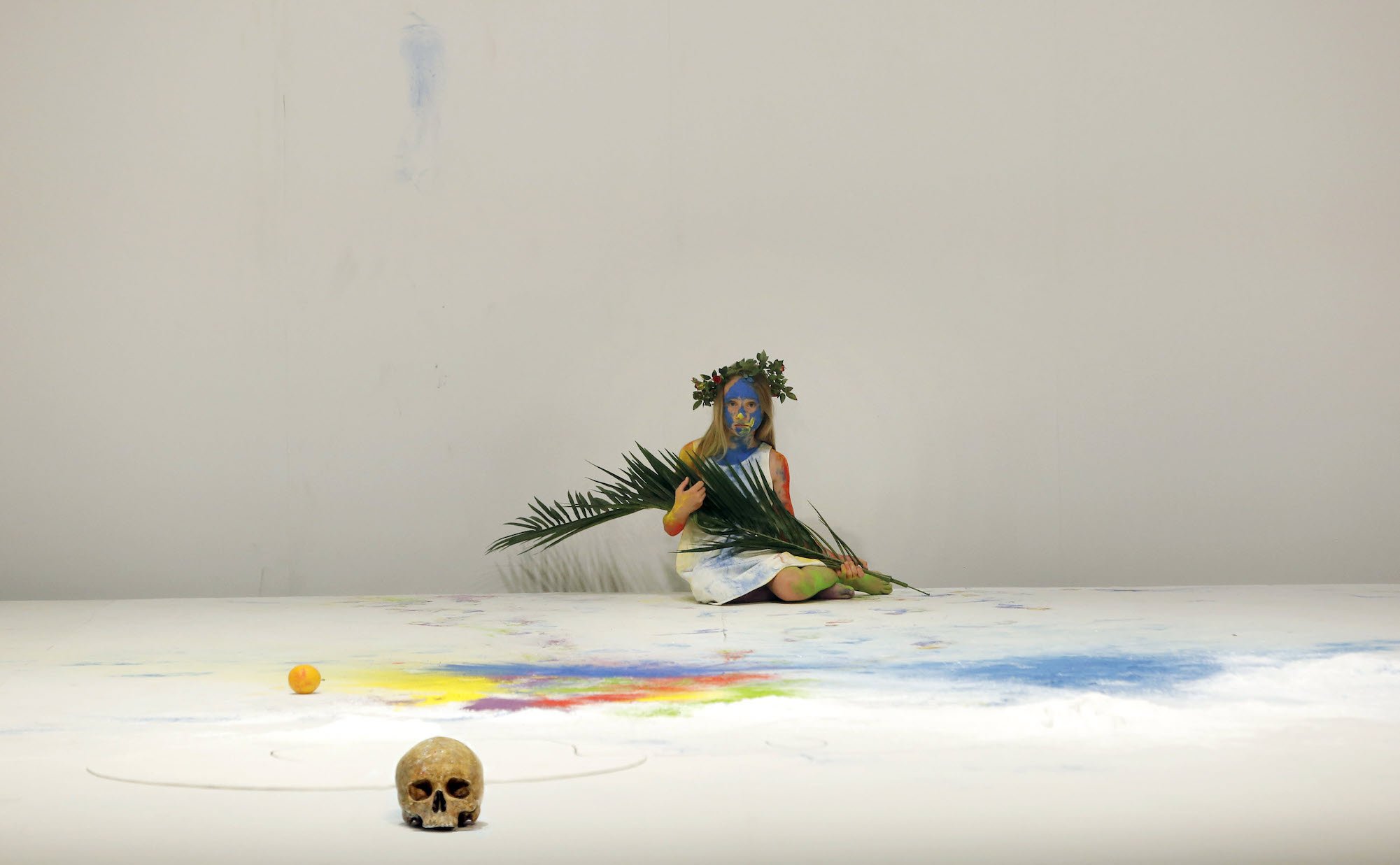
ROMEO CASTELLUCCI & RAPHAËL PICHON
ROMEO CASTELLUCCI & RAPHAËL PICHON:
IMMERSIVE ACOUSTICS PUSH THE LIMITS BETWEEN THEATER AND MUSIC AT WIENER FESTWOCHEN
When stage director Romeo Castellucci and Ensemble Pygmalion’s musical director Raphaël Pichon premiered their interpretation of Mozart’s requiem at Festival d’Aix-en-Provence in 2019, the work was instantly praised as a modern masterpiece.
However, when Wiener Festwochen contracted Amadeus Active Acoustics to reconfigure Museumsquartier’s Halle E for the spring 2022 prologue of the festival, it was unclear how the Requiem, which had won over outdoor audiences, would be successfully adapted to the festival’s chosen indoor venue.
Castellucci & Pichon reinvent Mozart’s final work as a contemporary reflection on the fragility and strength of human life in the Anthropocene.© Pascal Victor, Art Com.
Castellucci and Pichon’s colorful Gesamtkunstwerk blends dramaturgical, orchestral, and choir elements, requiring performers to jump between intimate and reflective vocals into bold orchestral expressions.
This unconventional approach to the Requiem, influenced as much by Mozart’s religiosity as by Castellucci’s love for avant-guard cinema, required frequent fluctuation between a dry and intimate soundstage and rich and reverberant acoustics.
The AMADEUS Core, enhanced by the Amadeus Active Acoustics design team’s 3-D modeling of Halle E, provided an optimal solution to adapt the venue’s room acoustics into an immersive hybrid orchestral and theatrical setting.
The piece involved strong theatrical aspects, which had to be supported by the acoustic design of Amadeus Active Acoustics. © Pascal Victor, Art Com.
This process included comprehensive planning of the system design, installation of the AMADEUS Core, subsequent calibration of the speakers and microphones, and creative tuning of acoustic presets to fit Castellucci and Pichon’s vision.
The live room resonance was adjusted to the specific atmospheres of the performance. As is a standout strength of the AMADEUS Core over other systems, customized acoustic spaces were developed so that, without onsite mixing, all-acoustic activity would react like a natural hall, instead of just offering synthetic reverberations.
Notably, Castellucci’s direction called for singers of the Ensemble Pygmalion, as well as soloists and dancers, to perform choreography and participate in intimate living sets with a high level of physical interaction. This meant that in order to preserve the intended dramaturgy, no microphones could be attached to choir members.
Performing artists and musicians needed absolute freedom to move on stage without microphones. © Pascal Victor, Art Com.
Amadeus Active Acoustics positioned a series of directional microphones above the stage, forgoing the need for the musicians to wear wireless microphones. Cast members were able to move around with absolute freedom and the audience experienced the same soundstage as the performers.
This also enabled an extraordinary sequence in the performance in which the choir sang from backstage while the audience was in the same acoustic space as the musicians and singers backstage.
“Nobody immersed by the performance should have the feeling that special technology is involved”
— Volker Werner, Amadeus Active Acoustics
Another poignant example of how technology enhanced the creative vision of the organizers came at a crucial moment at the end of the performance when a young boy sings alone from the orchestra pit. The switch from a reverberant space to the solitary voice of a child impressed audience members who described it as arresting, disorienting, and very emotional.
Volker Werner of Amadeus Active Acoustics remembers that an exceptional number of people approached his team after the performance to ask what they had done to achieve such playful and distinguished sound.
Doris Jaindl of Wiener Festwochen praised Amadeus Active Acoustics as central to the prologue’s success, noting that through the processes: “Amadeus Active Acoustics helped us translate thoughts from a musical perspective to a technical one through a system that flawlessly deals with quick changes.”
Castellucci and Pichon’s requiem demonstrates the AMADEUS Core’s ability not only to reach optimal sound within a concert or performance but also to cater to the theatrical needs of a performance. The trend will certainly evolve across future collaborations with theater ensembles, musicians, and multimedia performing artists.



